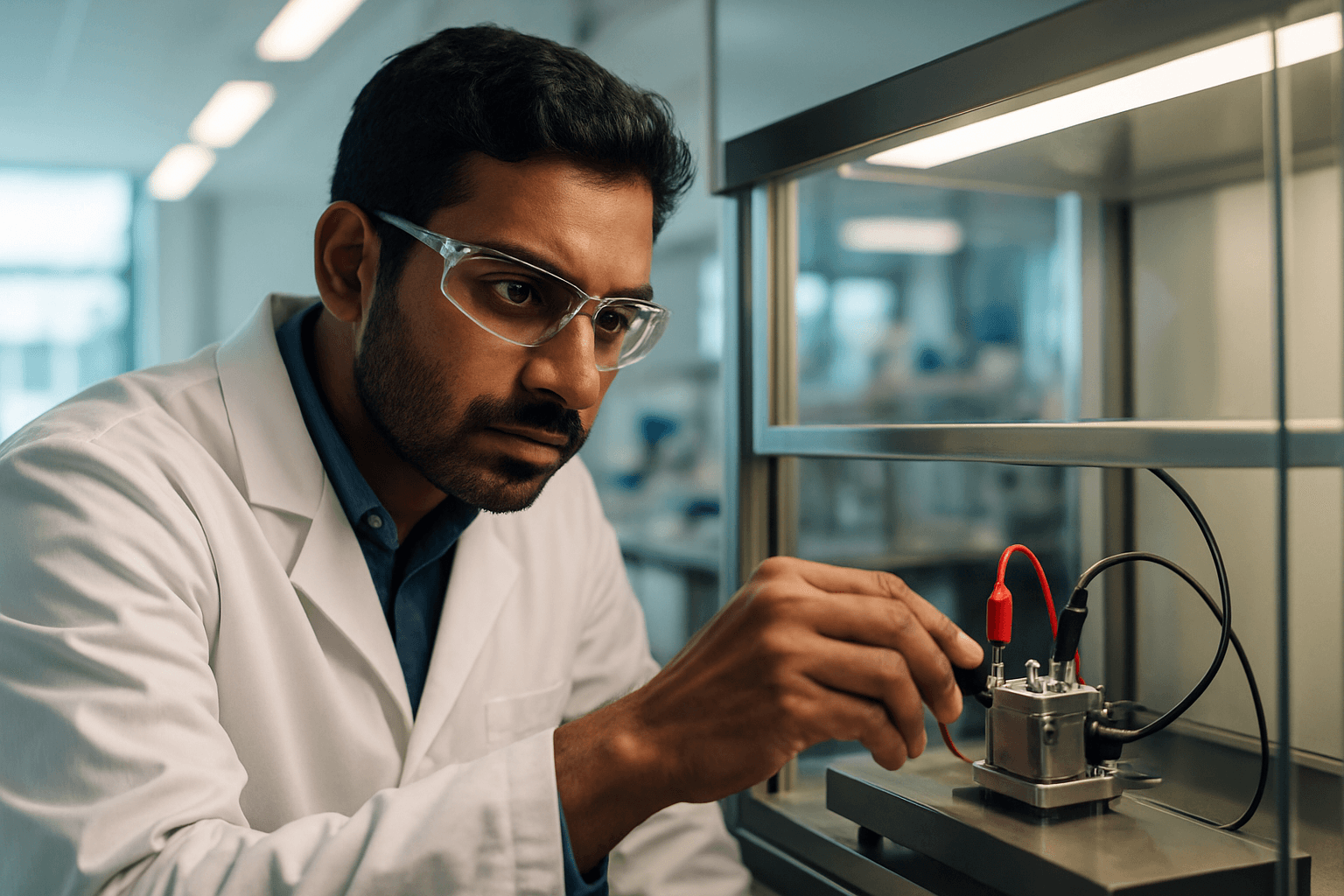Limerick, Ireland – Researchers at the University of Limerick (UL) have announced a significant breakthrough in energy storage technology with the development of the world’s first full-cell dual-cation battery, capable of operating for 1,000 stable charge and discharge cycles. This innovative system combines lithium and sodium ions to dramatically improve both battery capacity and stability, heralding a new era for sustainable energy research and potentially revolutionizing electric vehicles and portable electronics.
The pioneering work, detailed in the journal Nano Energy, was led by Associate Professor Hugh Geaney and Dr. Syed Abdul Ahad, both from UL’s Department of Chemical Sciences and Bernal Institute, in collaboration with researchers at the University of Birmingham.
Supercharging Sodium-Ion Batteries with Dual-Cation Technology
Traditional sodium-ion batteries have long been explored as a more sustainable and less expensive alternative to lithium-ion batteries, which currently dominate the market. However, a significant drawback of sodium-ion systems has been their lower energy density compared to lithium-ion counterparts, resulting in poorer performance. The UL team’s dual-cation system directly addresses this limitation.
“For the first time, we’ve shown that sodium-ion batteries can be ‘supercharged’ by pairing sodium and lithium in a sodium-dominant dual-cation electrolyte,” stated Associate Professor Geaney. This novel approach allows lithium to act as a “capacity booster” within the electrolyte, significantly enhancing the battery’s energy density while maintaining the long-term stability crucial for practical applications.
How the Dual-Cation System Works
Unlike single-cation batteries that rely on one type of ion (either lithium or sodium) for charge transfer, the dual-cation battery leverages the synergistic interaction of both lithium and sodium ions.
Tandem Ion Movement for Enhanced Performance
During charge and discharge cycles, both lithium and sodium ions work in tandem. Dr. Abdul Ahad explained that by introducing both cations, the battery’s capacity can effectively be doubled compared to what a typical sodium-ion battery would achieve with the same anode materials. This has not been achieved before with the high-capacity anode materials used in their study.
Benefits Beyond Capacity
Beyond increased capacity and stability, this dual-cation design offers several other critical advantages:
- Sustainability: By keeping sodium as the primary component, the technology becomes more efficient and sustainable, reducing reliance on costly and environmentally challenging materials like cobalt, which is common in many lithium-ion batteries.
- Cost-Effectiveness: The use of more abundant sodium as the main component contributes to a greener and less expensive battery overall.
- Long Cycle Life: The battery’s ability to withstand 1,000 stable cycles demonstrates its durability and potential for a longer operational lifespan, making it suitable for demanding applications like electric vehicles.
Implications for Electric Vehicles and Portable Electronics
This breakthrough has profound implications for the future of energy storage, particularly for electric vehicles (EVs) and portable electronics. Improved energy density is vital for extending the range of EVs, addressing a key concern for potential buyers. The enhanced stability and longer cycle life could also translate into more reliable and longer-lasting devices, from smartphones to grid-scale energy storage.
Future Research and Development
The UL research team, part of the Geaney Research Group, is now focused on expanding their study. Future plans include exploring new material combinations and alternative ion systems, such as silicon-based anodes and pairings like lithium-magnesium and potassium-lithium. This continued research aims to further optimize battery performance and explore the full potential of multi-ion battery chemistries.
This advancement underscores the University of Limerick’s position at the forefront of battery innovation, with over 30 active researchers in its battery cluster and the multidisciplinary AMPEiRE centre dedicated to next-generation energy solutions. The project received support from the Government of Ireland Postdoctoral Fellowship and the Research Ireland Frontiers for the Future programme.

